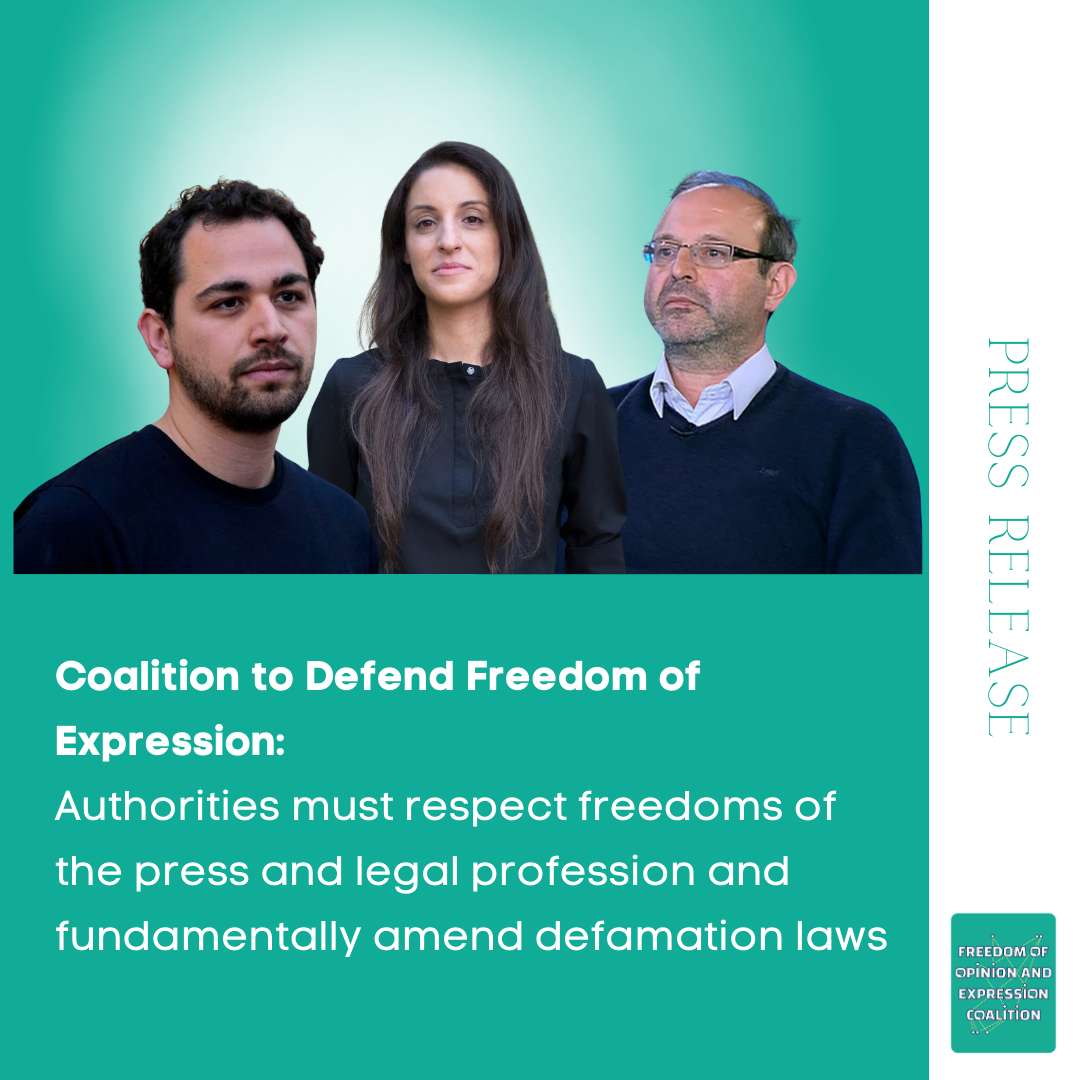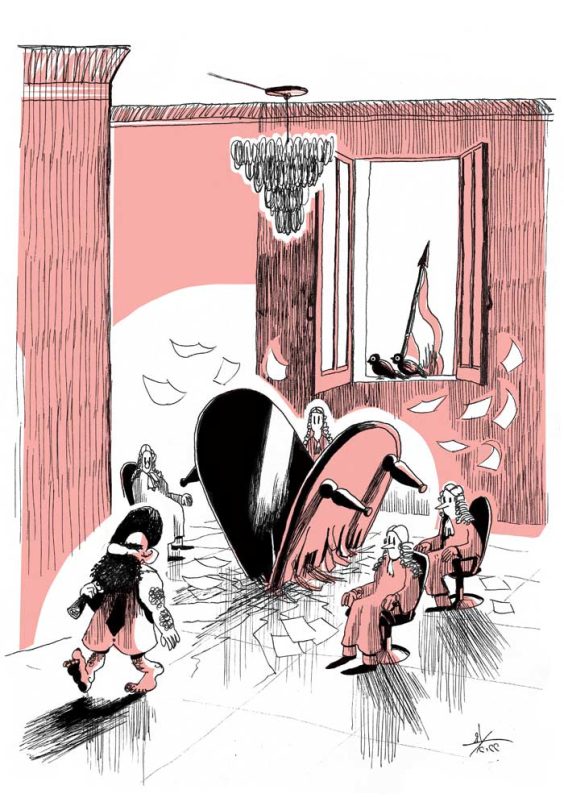Egypt’s Supreme Court: Interior Ministry Restrictions on Protest Unconstitutional

On Saturday, December 3, 2016, Egypt’s Supreme Constitutional Court ruled that the first paragraph of Article 10 of Legal Decree No. 107 of 2013 –the law regulating the Right to Public Meetings, Marches, and Peaceful Demonstrations– was unconstitutional. The first article of this law guarantees citizens’ right to organize and participate in public meetings, marches, and peaceful demonstrations in accordance with the provisions and regulations of the protest law.
This article examines the protest law and the circumstances surrounding its issuance, before turning to the content of the Supreme Constitutional Court’s ruling. Finally, I discuss the impacts of the ruling and the actions that parliament should take, now that the court has opened doors that had previously been shut.
The Protest Law Itself
Legal decree No. 107 of 2013 was issued by the interim Egyptian president after the end of the Muslim Brotherhood rule, with the toppling of its leader and former President Mohamed Morsi. Adly Mansour, who issued the legal decree, had been president of the Supreme Constitutional Court before taking over as head of state on July 3, 2013 during the transitional period. The latter began following the June 30 revolution and ended when current President Abdel Fattah el-Sisi took power on June 4, 2014.
The legal decree was published in Egypt’s Official Gazette No. 47 on November 24, 2013; it went into effect the following day. The law was issued in accordance with the Constitutional Declaration of July 8, 2013, and in the absence of a parliament. At the time, it was said that the law was issued because of the need to confront Muslim Brotherhood demonstrations. When he issued it, the interim president described its content as superior to that of the American protest law because it did not punish the act of protest itself, but rather, the crimes that occur during demonstrations; for example, intentional damage, possession of weapons during a demonstration, and disturbing the peace.
The law consists of 25 articles. The first affirms the right of citizens to organize and participate in public meetings, marches, and peaceful demonstrations, in accordance with the statutes and regulations specified in the law itself. Articles 2 through 4 establish definitions of public meetings, marches, and peaceful demonstrations. “Public meetings” are defined to include gatherings that conform to the Law on Electoral Meetings based on a set of enumerated criteria: first, that their aim is selecting a candidate(s) for membership in representative bodies (national or local), or hearing their electoral platforms; second, that the meeting is limited to voters and the candidates or their representatives; and, finally, that the meeting is held during the period specified for political campaigning.
Article 3 defines a march as “a procession of at least ten persons in a place, road or square, to peacefully express non-political opinions and aims”. Article 4 defines a protest as “a gathering of at least ten persons in a public place or moving in roads and squares, with the aim of peacefully expressing their political opinions, demands or objections”.
Article 5 prohibits public meetings with political purposes “in houses of worship, their vicinities or buildings associated with them”, as well as protesting in them or beginning marches from them. Article 6 prohibits those participating in public meetings, marches, or demonstrations from carrying weapons, ammunition, explosives, fireworks, “or other items that may put individuals, buildings or possessions in danger”. It also forbids participants from wearing masks or covering their facial features while doing any of these acts.
Article 7 establishes that protests should not violate security or public order, block [economic] production or call others to do so, hinder public interests, influence justice, block roads, transportation, or traffic, assault individuals or property, or expose them to danger.
Articles 8-15 specify the procedures and regulations governing public meetings, marches, and protests. Article 8 requires notification of the police station [in the jurisdiction where the protests will take place] at least three days in advance of any meeting, march, or demonstration. This notification must be submitted in writing, or submitted by a proxy. The law also specifies that the notification must include: the place of the gathering or route of the march or protest; its start and end times; its subject, aim, and demands; the slogans that will be used by the participants; and, the names of the organizers, along with their descriptions, place of residence, and contact details.
Article 9 concerns the committee on meetings, marches, and demonstrations. It states that such a committee shall be formed in each governorate and headed by its security director. The committee is to maintain security at gatherings and protests, and establish the means to handle protests that cease to be peaceful.
Article 10, whose first section was deemed unconstitutional by the Supreme Constitutional Court, states the following: “The interior minister or the security director may authorise a reasoned decision to prohibit, or postpone or change the location or route of a public meeting, or march or protest before its stated start time if serious information or evidence of threats to security or peace are obtained by them, notifying the organizers of the decision a minimum period of 24 hours in advance.” It also states that the organizers may appeal a decision to ban or postpone their demonstration, presenting their appeal to a summary affairs judge in a Court of First Instance.
Article 16 and the articles following it specify the penalties for violating provisions of the law. The most severe penalty is imprisonment for no fewer than seven years, or a fine ranging from LE100,000 to LE300,000; other penalties include imprisonment for a period of no fewer than three years, and imprisonment for two to five years.
The High Court’s Ruling
Challenges to the protest law’s constitutionality began just days after it was issued, when the law was enforced against protests that were held against the law itself. The appeal addressed several provisions of the law, most importantly, Articles 8 and 10. Since this infamous law was issued, there have been continuous demands to amend it. Initially, demands were made to bring the law in line with the Constitutional Declaration of July 8, 2013; and, once the new Constitution was issued, demands quickly emerged to amend the law to agree with the statutes of the Constitution, which explicitly establishes the right of citizens to organize public meetings, marches, demonstrations, and all forms of peaceful protest (Article 73 of the Constitution).
The Constitution recognizes that the rights and freedoms bestowed upon citizens are inalienable and “may not be suspended or reduced” (Article 92). Furthermore, Article 93 of the Constitution stipulates that the Egyptian state is bound by the international human rights conventions and the treaties that it has ratified. Once these are published in accordance with prescribed conditions, according to the Constitution, they have the force of law. All international human rights treaties stipulate the right to protest and to peaceful assembly; states may not undermine this right with domestic legislation that contradicts the international provisions that are binding upon the Egyptian state.
In light of these considerations –both domestic and international– the Supreme Constitutional Court in Case No. 160 of Judicial Year ‘96, on December 3, 2016, ruled that the first paragraph of Article 10 of the protest law was unconstitutional, and that the article should be dropped from the law. This was the article that permitted the interior minister or security director to prohibit a demonstration in the event they acquired credible information, or evidence indicating threats to public order or security.
The Supreme Constitutional Court based its ruling on the fact that the Constitution does not authorize the legislature to choose the means by which the right to protest and the right of assembly may be exercised. It ruled that notification, and no other method (such as permission or licensing) is the means by which this right to protest is to be exercised.
Notification is defined as announcing or informing the administration of the intent to exercise this right; it does not depend upon the administration’s agreement, or their lack of opposition in the matter. There is no justification for impeding the exercise of this right. Should a demonstration be prohibited, or the right be restricted in some way, the substance and essence of the right would be infringed upon, thus violating the Constitution.
However, the court also ruled that the right to gather and protest peacefully is not absolute or free from restriction, should it violate security requirements or infringe upon other rights and freedoms. Such a breach or violation might be overlooked, however, in favor of the rights of assembly and peaceful protest, because these two rights provide the most appropriate context for the exercise of freedom of expression. Freedom of expression carries its own intrinsic value, inseparable from democracy itself. Democratic states are established on the basis of their societies, and must safeguard all their citizens’ interactions with them; this is what guarantees the development of the state’s structure and the strengthening of its liberties. This is all predicated on several conditions: that gatherings and demonstrations are peaceful; they conform to constitutional statutes and to the requirements of public order; and finally, that any infringement on other rights and freedoms does not go so far as to have lasting effects.
With respect to Article 8 (which specifies the means of notification), the court rejected the challenge that it was unconstitutional. It explained that the Constitution grants the legislature the authority to regulate notification processes for public meetings, marches, and protests, and that the article regulated the notification process in a way that it deemed most appropriate for realizing the interests of the group, and that the article’s statutes were therefore constitutional.
Meanwhile, the court rejected Case No. 234 of Judicial Year ‘36, which challenged the constitutionality of Articles 7 and 19 of the protest law. These articles make it a crime to participate in a protest without notifying the appropriate authorities, and lay out penalties for failing to do so. The court established that Article 7 was in accordance with constitutional regulations regarding criminalization, and that the punishments specified in Article 19 (for violations of the statutes of Article 7) were commensurate with the gravity of the crimes in Article 7, without excess or negligence.
So what comes after the ruling?
Effects of the Court’s Ruling
The ruling makes clear that it only deems Article 10 of the protest law, not the other articles, to be unconstitutional. That is, the ruling is limited to the authority granted to the interior minister or security director to prohibit, move, or postpone a protest. Appeals regarding the constitutionality of the rest of the law’s articles, including Articles 8 and 19, were denied. Other articles were contested but no ruling was issued about them; it is likely that these appeals will also be denied as well.
But what about the effects of the ruling that was issued on December 3, 2016? In my view, the ruling has no impact on criminal or penal procedure; its sole effect is to pave the way for parliament to reconsider the law altogether.
Effects of the ruling on criminal procedure
Article 5 of Egyptian Penal Code states that “if, after a final judgement, a law is passed rendering non-punishable the deed for which a judgement is passed against the criminal, the execution of the judgement shall be discontinued and its criminal effects shall be terminated”. This statute addresses a case in which a law is issued after a final judgement that decriminalizes an act that was once a crime. It cannot be applied in the case of the protest law, however, because there is no new law allowing protest without notification, or decriminalizing the acts specified in the current law.
Thus, if the Supreme Constitutional Court had ruled that the provisions of the law criminalizing certain acts were indeed unconstitutional, then that ruling would become binding upon all state authorities, including the judiciary. Article 49 of the Law of the Supreme Constitutional Court stipulates that if a criminal statute is ruled unconstitutional, then any court rulings that had led to convictions according to that statute should be considered as though they were nonexistent, and the head of the delegates commission should immediately notify the public prosecutor of the ruling, in accordance with specified procedures.
However, in this case, it is clear that the Supreme Constitutional Court’s ruling does not concern the law’s criminal provisions. It is concerned only with the issue of the interior minister’s authority to prohibit, move, or postpone a protest, as specified in Article 10, and in rendering that section unconstitutional. In other words, the specific provision ruled to be unconstitutional does not pertain to a crime or a punishment for which convictions have been issued, and as such, it is not possible to say that those convictions should be overturned. In my opinion, the head of the delegates commission is therefore not legally bound to notify the public prosecutor of the ruling, because the ruling has no impact on criminal procedures.
Simply because a judicial ruling that a provision of a law is unconstitutional, this does not mean that the entire law is considered unconstitutional, unless the court explicitly states that this is the case. Thus the articles of the law that address criminalization and penalties will remain in force, unless they are amended or nullified by parliament. Should this occur, then the execution of the judgement would be discontinued, and its criminal effects would be terminated. However, if this does not occur, the provisions remain in effect along with their criminal effects.
However, I view this as evidence of the Supreme Constitutional Court’s rationale. Rather than weighing in on the controversial criminal and penalty provisions of the protest law, it sufficed to shed light on the problematic jurisprudence underpinning this law for the purpose of returning the issue to the sphere of parliament and the government.
Political effects of the ruling
The Supreme Constitutional Court’s ruling offered hope for easing the political friction caused, in part, by the protest law. The law itself was likely a product of the circumstances surrounding its issuance, which are no longer present. It is worth pointing out that for some time now, the state has taken measures to release some of those detained and imprisoned as a result of the protest law, in cases where there were no reports of commission of violent acts during demonstrations. But what other possibilities are now in play?
Government sources have announced that a new protest law is being prepared, which will take note of the provisions struck down by the Supreme Constitutional Court. However, I believe that the government must consider not only the court’s ruling about the challenged provisions, but also the circumstances of the ruling and the philosophy that inspired it. In particular, they should heed the court’s statement that the Constitution emphasizes that the legislative and executive authorities must impose restrictions it deems necessary to protect public rights and freedoms. This includes prioritizing the right to assembly and the right to peaceful protest, so that any restrictions do not violate the protected status of the right or the freedom, or interfere with it in such a way that makes it effectively impossible to exercise. The government, when preparing a draft bill, must ensure that peaceful protest is a tool of governance reform (with the condition that security must also be maintained).
Meanwhile, sources in parliament have stated that a draft protest law has been proposed, but discussion was delayed until after the Supreme Constitutional Court’s ruling. Now that the ruling has been issued explicitly and with its legal reasoning, parliament must not waste this historic opportunity to affirm that it is, indeed, a council of representatives of the people. Parliament also has the National Council for Human Rights’s observations about the law and its shortcomings, which are well known. Additionally, Parliament has the benefit of numerous studies on the law’s defects, as well as draft laws prepared by political parties and human rights organizations.
In summary, the government and parliament have now been given the chance to remedy the situation, and repair some of the damage done by the recent situation in Egypt. There is no doubt that current and future circumstances require the swift amendment of the protest law, along with other laws that restrict rights and freedoms in Egypt.



